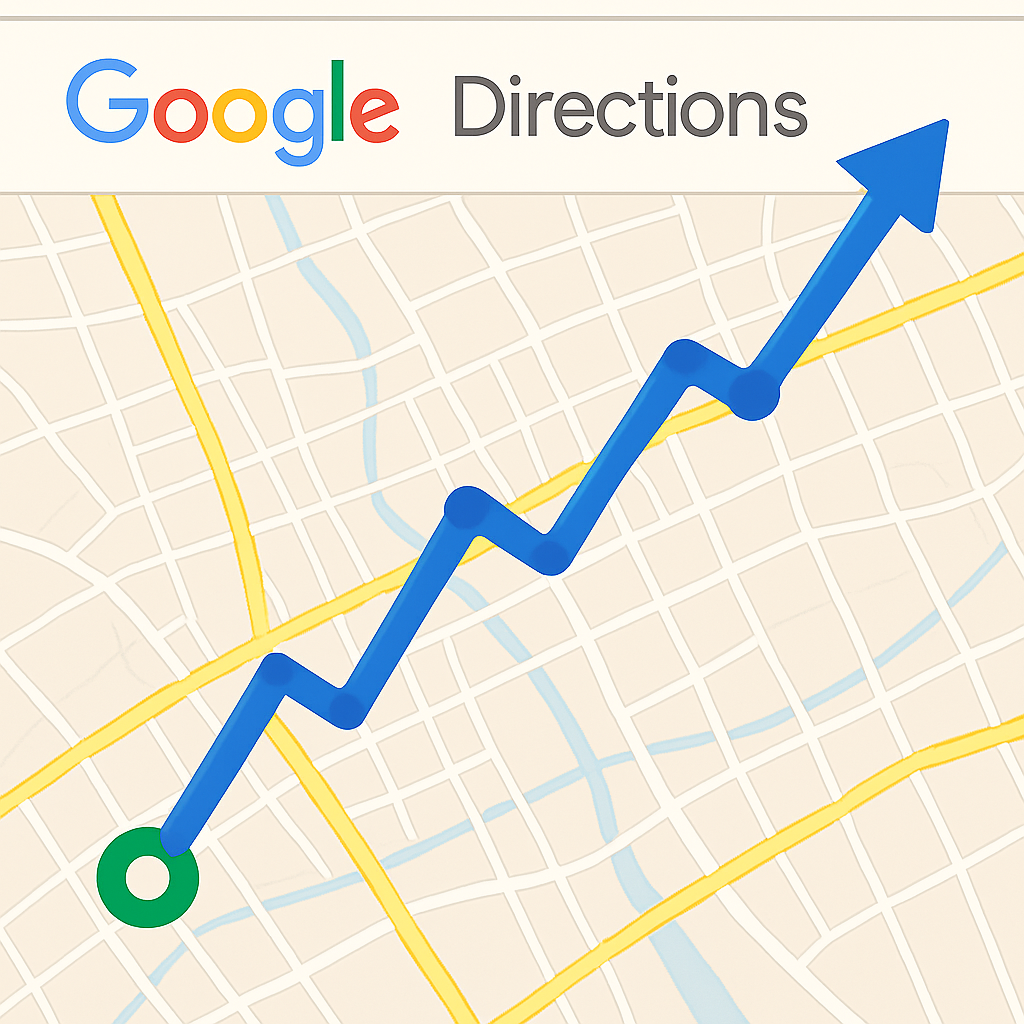Wellness Practice SEO: The Complete Guide to Ranking Higher Locally

Wellness Practice SEO: The Complete Guide to Ranking Higher Locally
When 80% of consumers search for local businesses weekly, your wellness practice’s online visibility isn’t just important—it’s essential for survival. The health and wellness industry faces unique challenges in local search, from strict advertising regulations to intense competition from both established medical practices and emerging wellness trends. Overcoming these challenges requires effective seo strategies tailored to the wellness industry.
Local SEO for wellness practices differs significantly from general search engine optimization. While traditional SEO focuses on broad keyword rankings, local seo strategies target geographically-relevant searches that drive foot traffic and appointment bookings. Healthcare seo is a specialized approach for medical and wellness practices, focusing on the unique needs of these industries. Your potential clients aren’t just looking for wellness services—they’re specifically searching for practitioners “near me” or within their city limits.
This comprehensive guide will walk you through every aspect of building a strong local seo strategy for your wellness practice. It will highlight the importance of website optimization, including strategic keyword placement and mobile-friendliness, and explain how seo services can help wellness practices achieve higher local rankings. By following this guide, you’ll be able to build an effective seo strategy for your wellness practice.
Key Takeaways
- Local SEO is essential for wellness practices to attract nearby clients and increase foot traffic
- Google Business Profile optimization can increase visits by 70% and is crucial for local visibility
- Consistent NAP (Name, Address, Phone) information across all platforms builds search engine trust
- Mobile optimization is critical as over 60% of local searches happen on mobile devices
- Positive reviews and reputation management directly impact local search rankings
- Location-based content and geo-targeted keywords improve local search visibility
- Schema markup helps search engines understand your wellness practice content better
Understanding Local SEO for Wellness Practices
Local seo focuses on optimizing your online presence for location-based searches, helping wellness centers, medical spas, and health clinics appear prominently when potential patients search for nearby services. Unlike traditional search engine optimization that targets broad keywords, local search optimization targets city, neighborhood, and proximity-based queries.
The shift toward hyperlocal search behaviors has been dramatic. Google’s “near me” searches have increased by over 500% in recent years, with secondary spikes during weekends when people are more likely to book last-minute wellness appointments. This represents a fundamental change in how patients search for healthcare providers and wellness services.
For the health and wellness space, this means users increasingly expect to find, evaluate, and contact practitioners within their immediate geographic area. The Google Map Pack—those three business listings that appear with map results—captures approximately 42% of all clicks, making it prime digital real estate for wellness practices seeking local search success.
Recent algorithm updates have further prioritized businesses with robust local relevance, proximity, and authority. Google now places heavy emphasis on local backlinks, consistent business citations, and genuine client reviews when determining local search rankings. This creates both opportunities and challenges for wellness websites looking to establish strong online presence in their service areas.
Understanding Google Search
Google search is the primary gateway for individuals seeking health and wellness services online. For healthcare providers in the wellness industry, understanding how Google search operates is essential for attracting potential clients and standing out in local search results. Google’s algorithm evaluates three main factors when displaying local search results: relevance, distance, and prominence. This means that your practice’s online presence must clearly communicate what services you offer, where you are located, and why you are a trusted choice in your community.
To optimize for Google search, wellness practices should focus on incorporating relevant keywords throughout their website and business listings, ensuring that their information is accurate and up-to-date, and actively encouraging positive reviews from satisfied clients. These elements help search engines connect your practice with local searches, increasing your chances of appearing in front of potential clients when they need your services most. By understanding the fundamentals of Google search and how it prioritizes local businesses, healthcare providers can develop effective local SEO strategies that boost online visibility and drive more patients to their practice.
Keyword Research and Optimization
Keyword research is a fundamental aspect of any successful SEO strategy, especially for healthcare providers aiming to improve their local SEO. The process begins by identifying the specific words and phrases that potential patients use when searching for medical services in your area. Tools like Google Keyword Planner are invaluable for uncovering high-traffic, location-based keywords that reflect real search intent.
Once you’ve identified your target keywords, it’s important to strategically incorporate them into your website’s service pages, meta descriptions, and headings. For example, a medical practice in New York might optimize its content with phrases like “medical practice in New York” or “New York healthcare services” to increase its visibility in local search results. By focusing on location-based keywords, healthcare providers can ensure their practice appears when potential patients conduct local searches, ultimately improving search rankings and attracting more qualified leads. Consistent keyword optimization across your website helps search engines understand your services and location, making it easier for local clients to find you.
Google Business Profile Optimization
Your google business profile serves as the foundation of your local seo efforts. This free online listing directly influences whether your practice appears in local search results and how potential clients perceive your business before visiting your website.
Claiming and Verifying Your Profile
Start by searching for your business on Google to see if a profile already exists. If found, click “Claim this business” and follow Google’s verification process, which typically involves receiving a verification code by mail, phone, or email. For new practices, create a profile by visiting the Google Business Profile website and providing accurate business information.
Selecting Relevant Business Categories
Choose your primary category carefully—options like “Wellness Center,” “Medical Spa,” “Acupuncture Clinic,” or “Physical Therapy Clinic” signal to search engines what services you provide. Add secondary categories to capture additional relevant business categories that describe your specific treatments or specialties.
Maintaining NAP Consistency
Your name address and phone information must remain identical across all online platforms. Even minor variations in formatting can confuse search engines and weaken your local search visibility. Establish a standard format and use it consistently across your website, social media platforms, and online directories.
Visual Content Strategy
High quality photos significantly impact user engagement and conversion rates. Listings with images generate 35% more click-throughs to websites and 42% more requests for directions. Upload photos of your facility, treatment rooms, staff, and any community events you host. Update these regularly to keep your profile fresh and engaging.
Google Posts and Updates
Use Google Posts to share updates, promotions, wellness education content, and upcoming events. These posts appear directly in your business listing and can include call-to-action buttons for appointment booking. Regular posting demonstrates an active business and provides additional opportunities to incorporate local keywords naturally.
Managing Online Reviews and Reputation
Online reputation management directly impacts your local search rankings and influences potential patients’ decisions. Reviews serve as both ranking signals for search engines and social proof for prospective patients considering your wellness services.
Ethical Review Acquisition Strategies
Develop a systematic approach to encourage patient reviews through automated follow-up systems. Send review request links or QR codes within 24-48 hours after appointments using HIPAA-compliant communication tools. Make the process simple by providing direct links to your Google review form rather than general instructions.
Consider these implementation tactics:
- Train staff to mention reviews during appointment checkout
- Include review requests in post-visit email communications
- Display QR codes at reception areas for immediate review submission
- Add review links to appointment confirmation emails
Professional Response Framework
Respond to both positive and negative reviews within 1-2 business days to demonstrate professionalism and build trust with your local community. For positive reviews, express genuine appreciation and mention specific services when appropriate. For negative feedback, acknowledge concerns professionally and invite offline discussion to resolve issues.
Avoid revealing any personal health information in public responses, maintaining strict HIPAA compliance in all communications. Template responses can streamline this process while ensuring consistency in tone and messaging across all interactions.
Showcasing Reviews Across Digital Platforms
Integrate positive reviews into your website, service pages, and social media content. Many wellness practices see significant conversion improvements after adding Google review widgets to their sites. This multi-platform approach reinforces credibility while providing additional content for search engines to index.
Citation Building and Directory Listings
Citations—mentions of your practice’s name address and phone across the web—signal location legitimacy and business prominence to search engines. Building a strong citation profile requires strategic placement in both general and industry-specific directories.
Essential Directory Platforms
Focus on these high-impact platforms for maximum local seo success:
General Directories:
- Yelp (particularly important for service businesses)
- Facebook Business (integrates with social media presence)
- Apple Maps (crucial for iOS users)
- Bing Places for Business (captures Microsoft ecosystem searches)
Healthcare-Specific Platforms:
- Healthgrades (trusted medical directory)
- Zocdoc (appointment booking integration)
- Wellness.com (wellness-focused community)
- Psychology Today (for mental health practitioners)
Local Business Networks:
- Chamber of Commerce listings
- Local wellness coalitions
- Community health organizations
Citation Consistency and Quality Control
Maintain identical formatting across all listings to build search engine trust. Inconsistencies in business hours, phone numbers, or address formats can dilute your local search authority. Regular auditing helps identify and correct discrepancies before they impact rankings.
Avoid mass submission to low-quality directories, as search engines now prioritize citation quality over quantity. Focus on reputable platforms that provide genuine value to users searching for wellness services in your area.
On-Page SEO for Wellness Websites
Well optimized website content targeting local keywords helps search engines understand your service areas and specialties. Effective on page seo requires strategic keyword placement, proper content structure, and location-specific optimization. Website optimization is a comprehensive process that involves not only keyword placement but also ensuring mobile-friendliness and creating high-quality content to enhance both search engine rankings and user experience. Additionally, optimizing valuable resources on your website, such as content, images, and meta tags, is essential to improve search engine rankings and attract your target audience.
Service Page Optimization
Create dedicated service pages for each treatment offered, incorporating location-based keywords naturally throughout the content. A page titled “Acupuncture in Austin” or “IV Vitamin Therapy Los Angeles” clearly signals geographic relevance to search engines while addressing specific patient needs.
Structure each service page with:
- H1 tags combining service and location (“Denver Wellness Spa Services”)
- H2/H3 subheadings for specific treatments and frequently asked questions
- Descriptive alt text for images referencing both service and location
- Internal links connecting related services and location pages
Location-Specific Content Development
Develop unique landing pages for each city or neighborhood you serve, avoiding duplicate content that could harm search rankings. Include local landmarks, community health concerns, and area-specific wellness tips to demonstrate genuine local relevance.
For practices with multiple locations, ensure each facility has its own dedicated page with unique content, embedded Google Maps, and location-specific testimonials from local clients.
Technical On-Page Elements
Optimize meta descriptions with compelling, location-specific language that encourages clicks from local search results. Include your primary keywords naturally while staying within Google’s 150-160 character limit for optimal display.
Implement proper URL structure using location and service keywords (“/services/massage-therapy-austin”) to reinforce geographic and topical relevance for search engines.
Mobile Optimization for Wellness Practices
With over 60% of local searches happening on mobile devices, mobile optimization directly impacts your ability to capture and convert potential patients. Mobile-first design isn’t optional—it’s essential for local search success.
Technical Mobile Requirements
Ensure your website passes Google’s Mobile-Friendly Test by implementing responsive design that adapts seamlessly to all screen sizes. Compress images and streamline code to improve loading speeds, as a one-second delay can reduce mobile conversions by 20% or more.
Key mobile optimization elements include:
- Click-to-call buttons prominently displayed
- Sticky “Book Now” or contact buttons for easy access
- Touch-friendly navigation with appropriately sized buttons
- Simplified appointment booking forms optimized for mobile input
User Experience Considerations
Mobile users searching for wellness services often have immediate intent—they’re looking to book appointments, get directions, or contact your practice quickly. Design your mobile experience around these core actions, removing friction from the conversion process.
Test your appointment booking system regularly on various mobile devices to ensure seamless functionality. Mobile form abandonment rates are significantly higher than desktop, making optimization crucial for capturing leads from local search traffic.
Schema Markup and Technical SEO
Structured data helps search engines understand your wellness practice content more effectively, improving your chances of appearing in enhanced search results and local pack listings.
Essential Schema Types for Wellness Practices
Implement LocalBusiness schema with specific subtypes like “MedicalBusiness,” “HealthAndBeautyBusiness,” or “DaySpa” depending on your practice type. Include complete address information, phone numbers, geographic coordinates, business hours, and logo details.
Service schema provides additional context about specific treatments, potentially improving eligibility for enhanced search results that display pricing, availability, or booking options directly in search results.
Review schema enables star ratings to appear in organic search listings, significantly improving click-through rates from potential patients comparing local options.
Technical Implementation
Embed Google Maps on your contact and location pages to reinforce geographic authority for search engine crawlers. Ensure your website architecture uses clear, crawlable URLs that incorporate both service and location keywords.
Regular technical audits help identify and resolve issues like broken schema markup, mixed HTTP/HTTPS protocols, or duplicate location pages that could negatively impact search performance.

Content Marketing for Local SEO
Strategic content creation targeting local search queries helps establish topical authority while capturing long-tail keyword traffic that often converts at higher rates than generic searches.
Tracking referral traffic from external sources, such as backlinks or partnerships, helps measure the impact of your content marketing and link-building efforts.
Locally-Focused Content Strategies
Develop blog content addressing seasonal or region-specific wellness concerns, such as “Allergy Relief During San Antonio’s Cedar Season” or “Winter Wellness Tips for Chicago Residents.” This approach demonstrates local expertise while capturing search traffic from community-specific health concerns.
Cover local community health events, wellness fairs, and practitioner partnerships to build connections with your local audience. Feature client success stories that mention specific neighborhoods or local landmarks to reinforce geographic relevance.
Educational Content with Local Intent
Create comprehensive FAQ pages targeting long-tail local search queries like “Is acupuncture safe during pregnancy in Chicago?” or “Best massage therapy for athletes in Denver.” These pages often rank well for highly specific searches and attract qualified traffic.
Develop city-specific landing pages and multi-location guides for practices serving multiple areas. Each page should contain original content, local testimonials, and service details relevant to that specific community.
Local Link Building Strategies
Quality backlinks from locally-relevant websites significantly boost local search authority. Focus on building relationships with complementary businesses and community organizations for sustainable link acquisition.
Partnership and Collaboration Opportunities
Partner with complementary businesses like yoga studios, fitness centers, or health food stores for cross-promotional content and reciprocal linking opportunities. Guest posting on local lifestyle blogs or health publications often provides valuable backlinks while showcasing your expertise to potential patients.
Sponsor local events, health fairs, or charity fundraisers to earn authoritative backlinks from event websites and local media coverage. For example, sponsoring a local charity run often results in event page links and local news mentions that boost both links and citations.
Community Engagement and PR
Pursue local media coverage by pitching new treatments, notable staff hires, or community wellness programs to regional newspapers and lifestyle publications. Local press coverage typically provides high-quality backlinks while building brand awareness in your service area.
Participate in local “Best of” awards or industry recognition programs that often result in authoritative backlinks and local citations from trusted community sources.
Tracking and Measuring Local SEO Performance
Comprehensive performance measurement enables data-driven optimization decisions and demonstrates ROI to practice stakeholders. Multiple tracking tools provide different insights into your local seo efforts’ effectiveness.
Essential Tracking Tools and Metrics
Google Analytics 4 with location segmentation helps track local organic sessions, goal conversions (calls, form submissions, appointment bookings), and user behavior patterns from local search traffic. Set up conversion tracking for key actions like phone calls from your website or completed appointment forms.
Google Search Console provides keyword ranking data, click-through rates, and indexing status for your local service and location pages. Monitor these metrics regularly to identify optimization opportunities and track progress on target keywords.
Google Business Profile Insights offers data on search queries (discovery vs. direct searches), user actions (calls, messages, direction requests), and profile performance metrics that directly relate to local search visibility.
Performance Benchmarks and Goals
Track conversion rates from local search traffic to appointment bookings, as healthcare and wellness practices typically see conversion rates between 5-15%—higher than most other industries. Monitor phone call volume, website visits, and direction requests from your Google Business Profile as leading indicators of local search success.
Use rank tracking tools to monitor positions for local keywords and “near me” searches, focusing on improvement trends rather than daily fluctuations that can vary based on user location and search personalization.
Common Local SEO Mistakes to Avoid
Understanding frequent pitfalls helps wellness practices avoid penalties and ranking drops that could significantly impact patient acquisition.
Profile and Listing Errors
Avoid keyword stuffing in your business name or Google Business Profile, as this violates Google’s guidelines and can result in profile suspension. Use your actual business name consistently across all platforms rather than adding location or service keywords artificially.
Prevent duplicate Google Business Profiles by conducting thorough searches before creating new listings. Multiple profiles for the same location divide reviews and confuse both search engines and potential patients.
Technical and Content Issues
Maintain consistent name address and phone information across all online platforms. Even minor formatting differences can reduce search engine trust and weaken local search performance.
Ensure your website provides an excellent mobile experience, as poor mobile usability directly impacts local search rankings. Test your site regularly on various devices to identify and resolve user experience issues.
Review Management Problems
Never ignore negative reviews or respond defensively, as professional review management significantly influences both search rankings and patient perceptions. Develop response templates that acknowledge concerns while protecting patient privacy and demonstrating commitment to service improvement.
Advanced Local SEO Tactics
Sophisticated optimization techniques can provide competitive advantages in crowded local markets where basic optimization isn’t sufficient for top rankings.
Enhanced Technical Implementation
Geo-tag photos uploaded to your Google Business Profile and website by embedding GPS coordinates that reinforce location relevance. Name image files descriptively with geographic and service keywords (“oakland-iv-therapy-clinic.jpg”) to provide additional context for search engines.
Add UTM parameters to links in your Google Business Profile to track conversion sources more accurately in Google Analytics, enabling better understanding of which local search activities drive the most valuable traffic.
Hyperlocal Content and Targeting
Create neighborhood-specific content that addresses wellness needs for particular areas within your city, such as “Wellness Tips for South Austin Families” or “Managing Stress in Downtown Chicago’s Business District.” This hyperlocal approach can capture very specific search queries with high conversion intent.
Implement sophisticated schema markup beyond basic business information, including event schema for workshops, FAQ schema for common questions, and professional staff schema to enhance search result displays.
Integration with Paid Advertising
Run location-targeted Google Ads with location extensions and call extensions to dominate local search results pages. Local Services Ads (LSAs) for eligible healthcare providers can provide additional visibility in competitive markets.
Coordinate organic and paid efforts by using keyword research from your seo strategy to inform ad targeting, ensuring comprehensive coverage of high-value local search terms.
SEO Strategy and Planning
A well-crafted SEO strategy is essential for healthcare providers who want to master local SEO and achieve long-term success. This involves more than just optimizing your website—it requires a holistic approach that includes on-page optimization, link building, and maintaining accurate listings in local business directories. Building a strong online presence starts with high-quality content that addresses the needs and concerns of your local community, positioning your practice as a trusted resource.
Key components of a successful SEO strategy include regularly updating your service pages, participating in local events, and encouraging patient reviews to build credibility and trust. Link building with reputable local organizations and businesses can further enhance your authority in the eyes of search engines. By focusing on these elements, healthcare providers can improve their search rankings, increase foot traffic, and foster lasting relationships within the local community. Consistent effort and strategic planning are the foundation for local SEO success, helping your practice stand out in a competitive wellness industry.
Conclusion and Next Steps
In conclusion, local SEO is a powerful tool for healthcare providers looking to boost their online visibility, attract more potential patients, and grow their practice. By understanding how Google search works, conducting thorough keyword research, and developing a comprehensive SEO strategy, you can position your practice for local search success. The next steps involve putting these strategies into action, monitoring your progress, and adapting to changes in search engine algorithms and patient behavior.
Utilize tools like Google Search Console to track your website’s performance, identify opportunities for improvement, and refine your SEO efforts over time. A strong online presence, built on consistent optimization and proactive engagement, will help you build trust with potential patients and drive sustainable growth for your practice. By staying committed to your local SEO strategy, you can ensure your wellness practice remains visible, relevant, and competitive in the ever-evolving health and wellness space.














